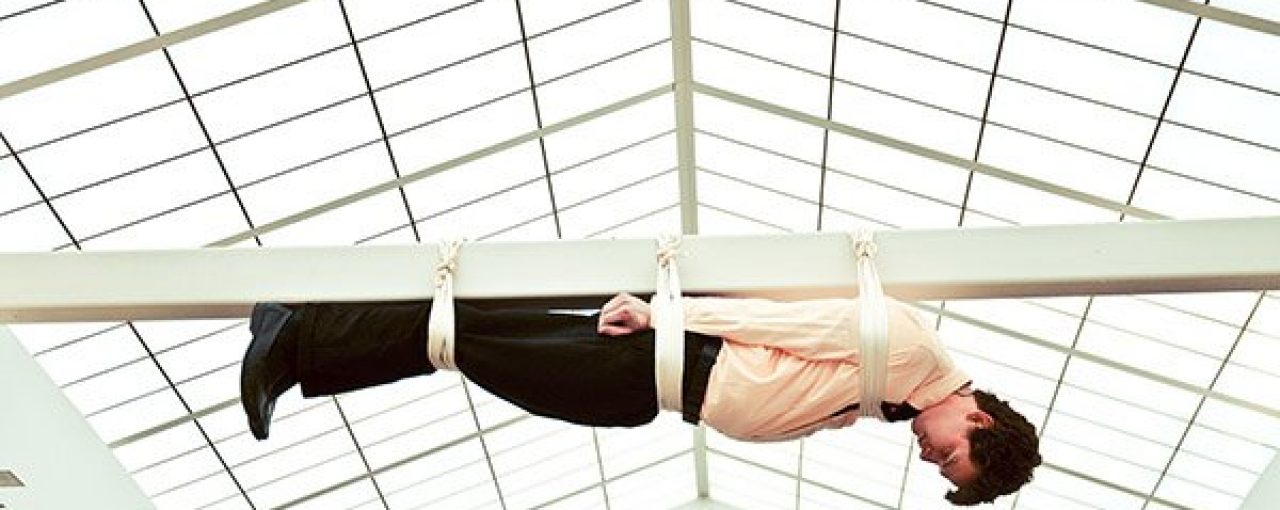“My father is an artist so I grew up around art all my life.”
Interview by Jennifer Nelson, WTP Feature Writer
Zac Benson is an international artist whose work has been shown in Taiwan, Bulgaria, and the United States. He has had public commissions in Australia, California, New York, and Washington, D.C. He graduated with a BFA in Sculpture from the University of Tennessee, Knoxville in 2011 and an MFA in Studio Art from the University of Maryland in 2017. Currently, he is an assistant professor of studio art at Cedarville University in Ohio, where he teaches sculpture and ceramics.
Nelson: When did you first become interested in pursuing art as a career?
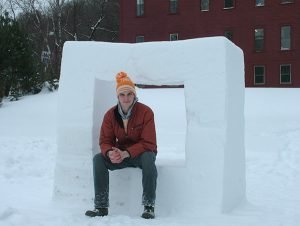
Benson: My father is an artist so I grew up around art all my life. My earliest memories were playing with bolts, clay, wood, and tools in his studio. Even though I was around his studio all my life, I did not think I wanted to be an artist. It wasn’t until my sophomore year of undergraduate school at The University of Tennessee that I decided to take an art class. My first art class was ceramics and I knew the moment I stepped into that class that I wanted to pursue art as a career.
Nelson: In 2012, you applied to five MFA programs, but were rejected from all of them. You took this experience and created performance art from it. Can you comment on the work you produced during this time, including “Above All Else; All Dressed Up with No Place to Go,” and the lessons you learned from it?
Benson: I will be honest, I never thought I would ever create performance art. But, when you are confronted with a harsh fact of getting rejected to all the MFA programs you applied to, you start to think differently. I had my future planned out and this was not in the plan. It just felt natural to do performance art since this was all about me.
“Above All Else; All Dressed Up with No Place to Go” was about this idea that I had my future planned and letter after letter came back and I started to realize I would have to adjust my plan. I wanted to convey this personal experience through a performance so I decided to dress up as if I were ready to go somewhere and tie myself to the beam above my personal studio for a period of time.
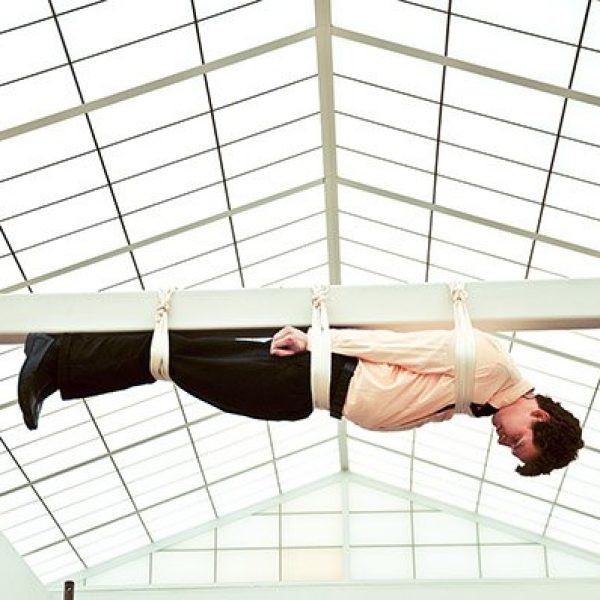
Nelson: “Wages of War” features blurred images of a congressman or a congresswoman overlaid with the faces of fallen soldiers. Can you talk about the process of creating this piece and what it represents?
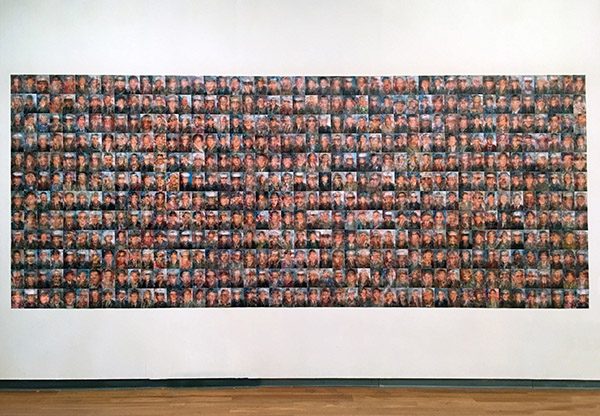
Benson: This piece consists of 4,497 images of the men and women who died while serving in the Iraq War from 2003–2011 and the congressmen and women who were seated when voting to go back to war. I would take an image of one of the congressmen and overlay that image with nine of the service men or women who died. This then created a ghost-like image.
This piece is simply about making the viewer aware of the wages of war. On October 21, 2011, President Barack Obama announced that the last combat soldier would leave Iraq by the end of that year, drawing the eight-year war to a close. “Our troops will definitely be home for the holidays,” Obama said at the White House. Less than three years later, he told a national television audience that he would send 475 military advisers back to Iraq to help in the battle against the Islamic State. By April 2016, more than five thousand American troops were in Iraq. This is when I personally started to become aware of the wages of war. Before this, I was apathetic to war; disengaged.
Nelson: “God Is Greater” commemorates Saint Elijah’s Monastery, a Christian cloister in Iraq whose ruins were destroyed by the Islamic State in 2014. You mounted fifteen identical Arabic-language Bibles on the wall; each one had a slightly different image of the lost cloister burned into its cover. What techniques and materials did you use to create these images? What ideas do you want to convey to viewers?
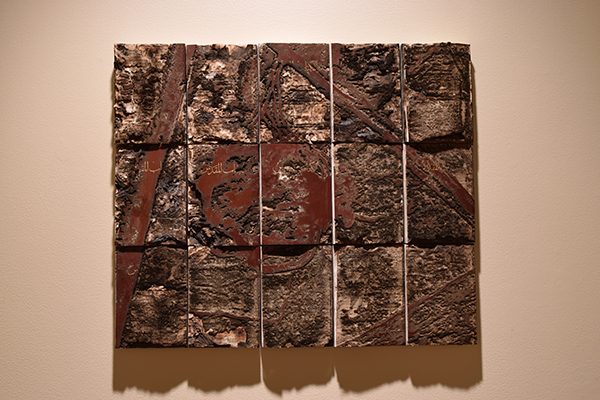
Benson: This is an intense piece. I took a laser cutter and practically burned this devastating image of the monastery into fifteen Bibles that were translated into Arabic. The Bibles here represent the monastery. I wanted to show the harshness of the action. While the surface of the Bible is defaced, the substance of it remains. My own personal faith unites myself to the faith that was centered around the monastery, and so the title “God is Greater” speaks to my belief that even though this happened, the God of that monastery is not affected by the demolition of a building.
Nelson: In “Looking at Life Through Rose-Colored Glasses,” you take small, used communion cups and enclose them in acrylic glass to create an image of uniformity. The sculpture is over five feet long. How does this defy the traditional relationship between scale and form?
Benson: Communion in the Protestant faith is incredibly special and sincere and is unique in that it is meant for the individual within a community. I wanted to show the intimacy of this act by having the individual cups, while still showing the community that surrounds the act.
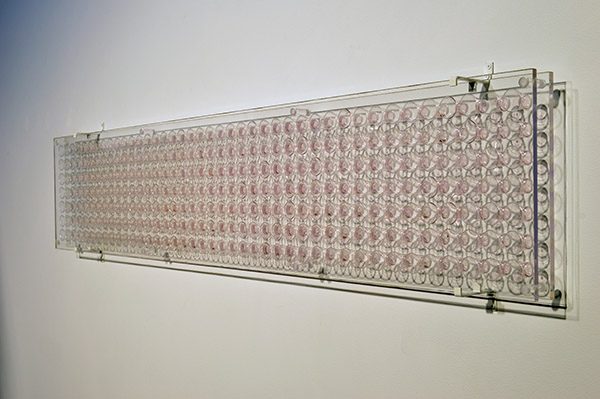
Nelson: How does teaching at Cedarville University, a private, co-educational Baptist school, inform your personal artwork?
Benson: I affiliate myself with the Christian faith, so it is a natural fit for me to be teaching at a school such as Cedarville. I don’t think Cedarville has informed my work that much since I was making this body of work previous to this position. With that said, it is very helpful to be in a community of people who support the work I am making.
Nelson: How do you see your art evolving in the future?
Benson: I would like to incorporate more technology, such as sound and video, into my work. I am also trying to create a new body of work that utilizes performance art. Other than that, I am not sure. My work and ideas tend to take me where they want me to go, I just follow and create.
See Zac Benson’s work in WTP Vol. VI #4.
Copyright 2018 Woven Tale Press LLC. All Rights Reserved.

